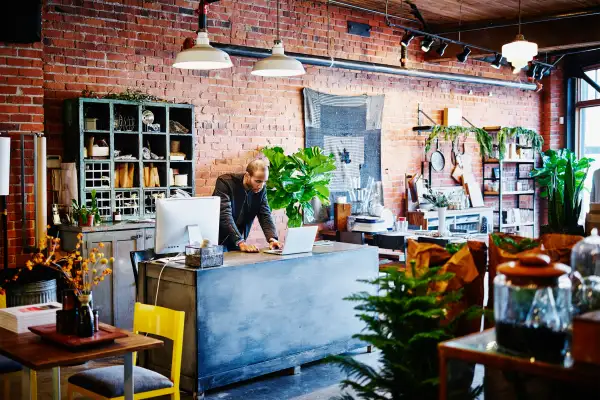Small Business Owners Fear They Won't Survive a Continued Shutdown. Here Are the Industries Most At Risk

If the economy doesn’t reopen soon, most U.S. small business owners predict they won’t make it to the end of 2020. Many say they won’t even make it to the end of the summer.
Right around the time that President Trump signed the coronavirus relief plan into law, a team of economists at Harvard University, the University of Illinois, and the University of Chicago asked thousands of business owners how the pandemic was impacting their operations. Seventy five percent said they only have enough accessible cash to cover two months of expenses or less. And some industries are in dire straits.
“There’s a real fragility that small businesses have,” says Alex Bartik, assistant professor at the University of Illinois, and one of the study’s co-authors. “Very few have the kind of cash on hand where they could keep their doors open for a sustained time period, given the current crisis.”
Across a sample of more than 5,800 small business owners polled between March 26 and April 2, 41.4% reported that they were temporarily closed because of COVID-19, and that their workforce had been cut by an average of 40%.
But the future looks particularly gloomy for restaurants, bars, and other businesses that rely on face-to-face contact with customers.
Business owners in tourism and lodging predict there’s a 66% chance they’ll still be open at the end of 2020 if this crisis lasts just one month. Those in the “personal services” category—businesses like beauty salons and gyms—say they stand a 57% chance of surviving past the one-month mark (For states like Washington, New York, and California, which have been battling the pandemic since March or earlier, that month has already come and gone).
The longer business owners were asked to imagine the coronavirus crisis lasting, the more dire their predictions were.
Personal services business owners predict they have a 48% chance of making it to December 31 if the crisis lasts for four months, and a 27% chance if it lasts for six. Restaurant owners, one of the industries that has been dealt the biggest blow by the pandemic, predict they stand a 30% chance of surviving a four-month crisis; and a meager 15% chance if it lasts six months.
That doesn’t mean that every small business in these industries is doomed if the coronavirus shutdown stretches past a few months, Bartik says. Many have access to lines of credit designed to help combat price fluctuation and other uncertainties. But most businesses “aren’t set up to have revenue go to zero for a sustained period of time,” he says. Inevitably, the sudden loss of income will force some to look to other types of debt — or file for bankruptcy.
Small businesses — defined by the Small Business Administration as those with fewer than 500 workers — employ almost half of the U.S. workforce. Congressional stimulus packages, Bartik says, will be vital in the fight to keeping them afloat.
The majority of small business owners surveyed by his team (72%) said they would want to apply for loans via the Paycheck Protection Program (PPP), part of the multi-trillion-dollar CARES Act stimulus package that issues grants for businesses that keep a certain percentage of employees on payroll. But as of April 16, those funds have already dried up, according to the SBA.
“It’s a big deal, and not just for owners of businesses,” Bartik says. “Whether or not they can survive through this crisis will have a big effect on a lot of Americans ability to get back to work."
